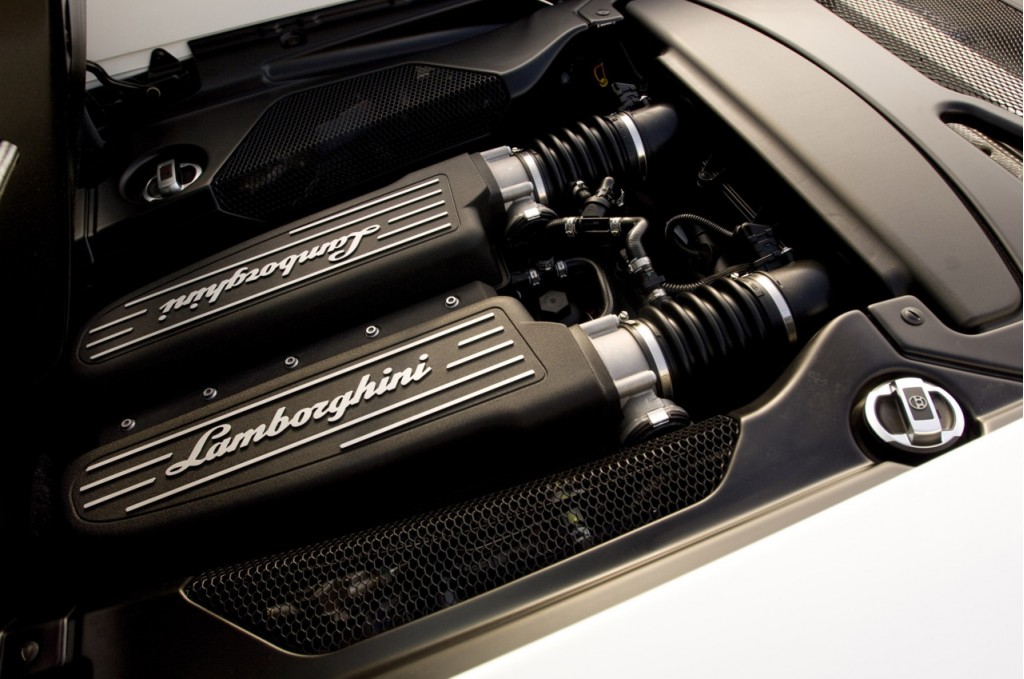Twenty years ago the world was introduced to a new machine produced inside a Sant’Agata Bolognese factory. Powered by a 5.0-liter V-10 engine (and later a 5.2-liter V-10), the original Lamborghini Gallardo roared to life and helped create a volume seller (relatively speaking) for the famed Italian automaker.
Now, two decades on, Lamborghini has taken a look back with a press release at a key model that helped turned the company from an almost cottage industry-like business into an internationally recognized brand that will soon compete at the top level of sports car racing.
The Gallardo made its world debut at the 2003 Geneva motor show, and soon after the launch it set sales record after sales record. A total of 14,022 examples were built over its 10-year lifespan, with the last car, a Gallardo LP 570-4 Spyder Performante finished in Rosso Mars, rolling off the line on Nov. 25, 2013. Incredibly, it took the Gallardo’s successor, the Huracán, just five years to beat that tally.
Lamborghini had already tested the waters with a smaller, more affordable model as early as the 1970s, when the company was still run by founder Ferruccio Lamborghini. The first was the Urraco, which evolved during the 1980s into the Jalpa.
final Lamborghini Gallardo
The Gallardo’s gestation also began in the ’80s. After Lamborghini was purchased by Chrysler in 1987, it started work on a car code-named the L140. It was to be a smaller, mid-engine supercar to sit below the V-12 line. The company originally planned a V-8 engine but later switched to a V-10. However, the recession of the early 1990s and the sale of Lamborghini to Malaysian and Indonesian interests at that time put the project on hold.
After Volkswagen Group purchased Lamborghini in 1998, the new owner revived the project but started from scratch. Only the basic concept, general dimensions, and the idea of a V-10 engine were retained. Lamborghini was responsible for the V-10, whose development was overseen by Massimo Ceccarani and Maurizio Reggiani. Ceccarani was Lamborghini’s technical director at the time, a role he handed to Reggiani in 2006. Reggiani in 2022 passed the reins on to Rouven Mohr.
For the chassis, Lamborghini selected an aluminum design based on extruded parts welded to cast connection elements. The body parts would then mount to the chassis using various methods (rivets, screws, or welding), depending on the function of the part. Other parts, such as the front and rear fascias, consisted of thermoplastic material and were connected by bolts.

Lamborghini Gallardo LP560-4
The actual design of the car started in 2000, based on initial concept work supplied by Italdesign (formerly Italdesign Giugiaro) and finalized by Lamborghini’s design team, which was headed by Luc Donckerwolke at the time. Donckerwolke, who is now at Hyundai Motor Group and leads Genesis design, was also responsible for the Murciélago launched in 2001. Aviation was the inspiration, with the cab-forward design, sharp angles, and complex treatment of flat surfaces all taken from modern jet fighter design.
Over the years, additional variants were launched, including the lightweight Superleggera, open-top Spyder, and even a GT3 race car. Prior to that, Lamborghini’s motorsports participation was very limited.
While all these aspects proved impressive, what really made the Gallardo stand out, however, was its performance combined with drivability, reliability, and everyday practicality. It could be used as a daily driver by many of its owners, something that couldn’t be said for many supercars at the time.
